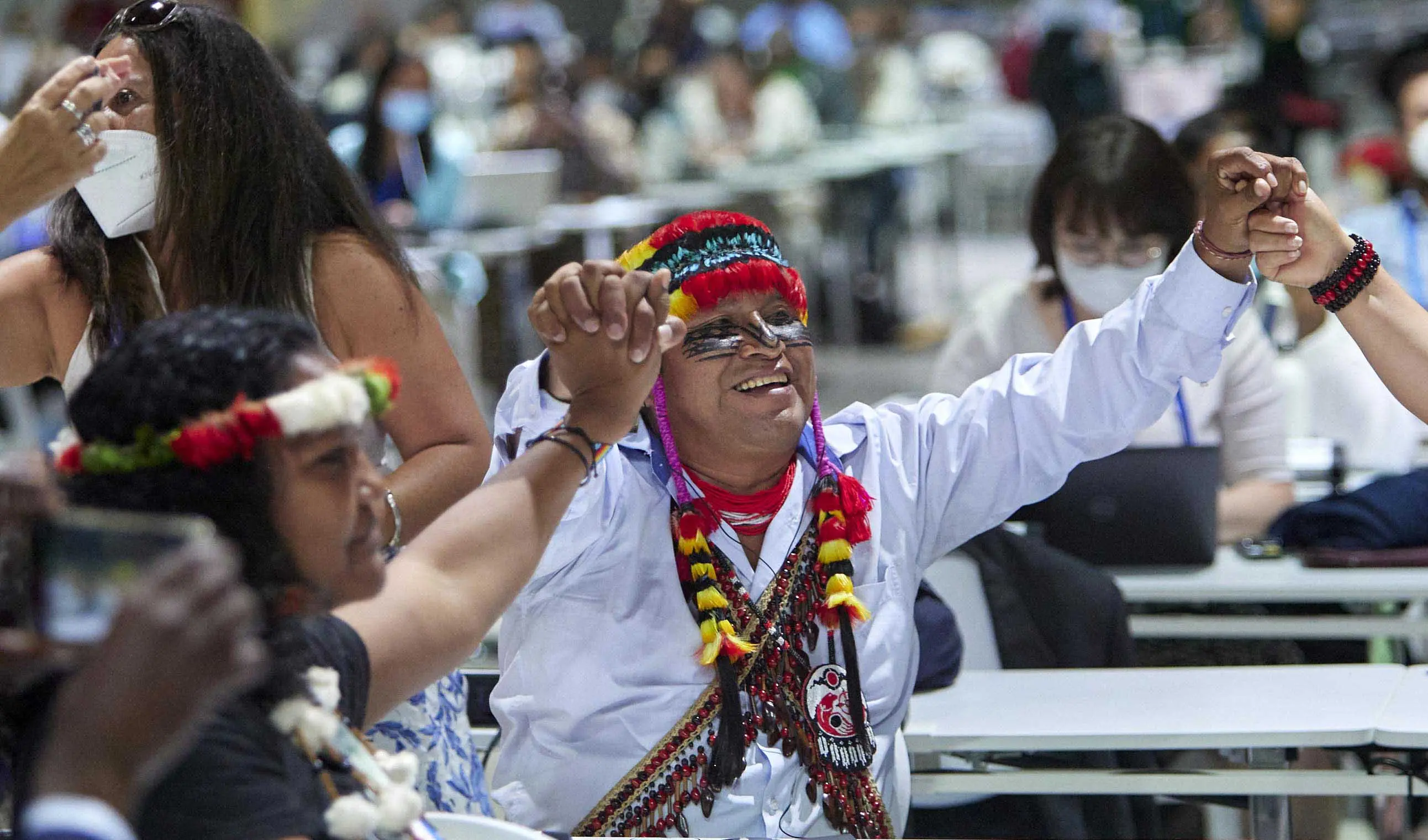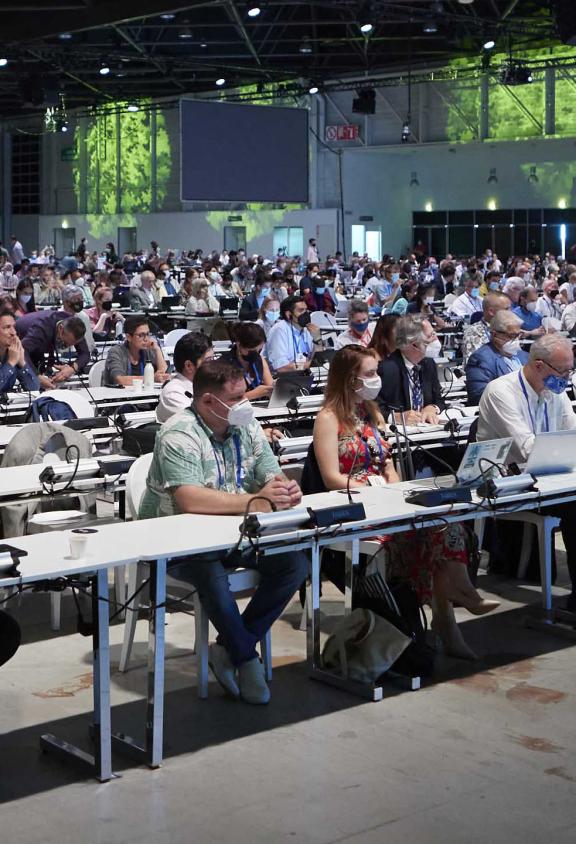IUCN Members convene every two to four years to debate and agree major policy issues and approve the organisation’s programme. A major outcome of these meetings are the Resolutions and Recommendations. These efforts guide global conservation efforts by, for example supporting the preparation of the World Conservation Strategy and contributing to the development of environmental treaties such as CITES, Ramsar, World Heritage and the Convention on Biological Diversity.
Components

© IUCN
IUCN’s Members have issued over 1400 Resolutions since the organisation’s founding in 1948. These have been the Union’s most effective means of influencing conservation policy, at species, site, national and global levels.
Visit the IUCN Resolutions and Recommendations Platform
Decision in action: Synthetic biology
Decision in action: Unselective, Unsustainable, and Unmonitored Fisheries
IUCN’s Resolutions have also supported Indigenous peoples, gender issues and the recognition of conservation as part of human rights. It has also focused attention on conserving threatened species and protected areas, helping to design effective approaches that are now global standards.


